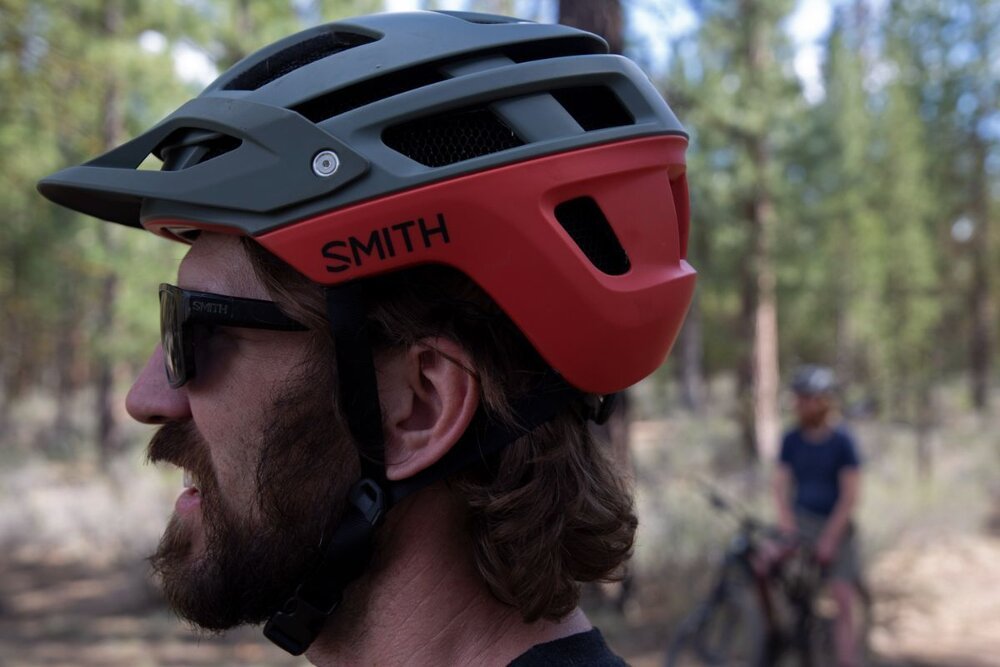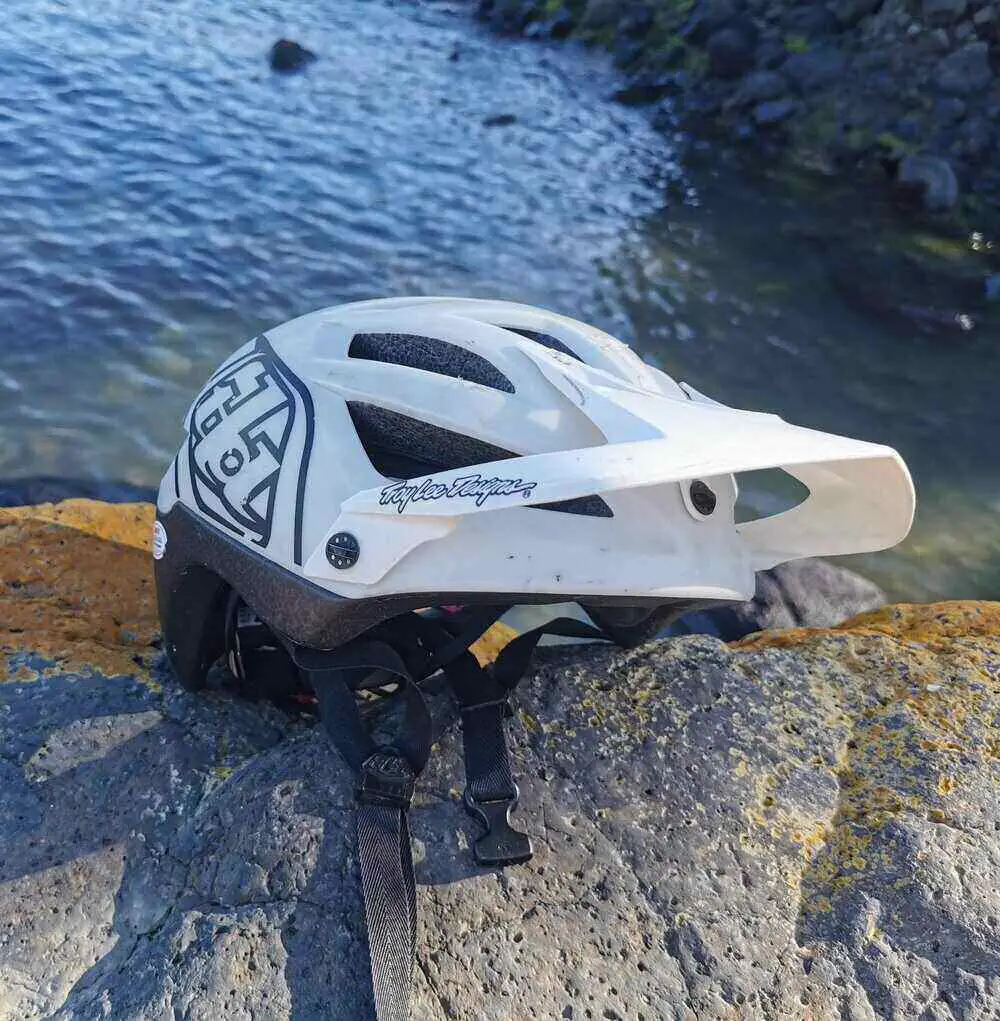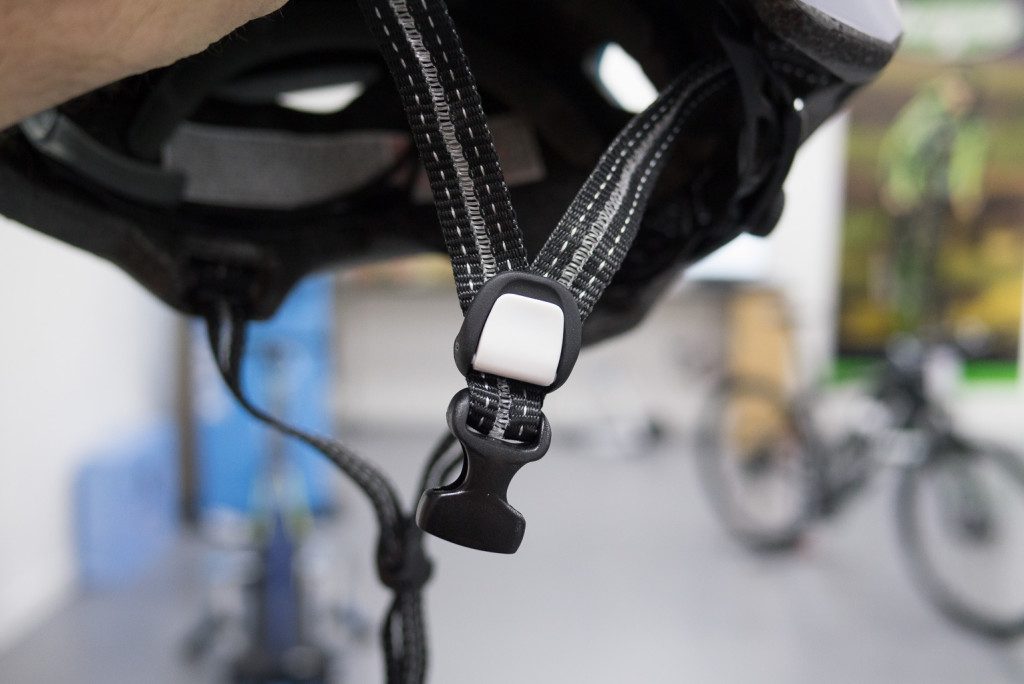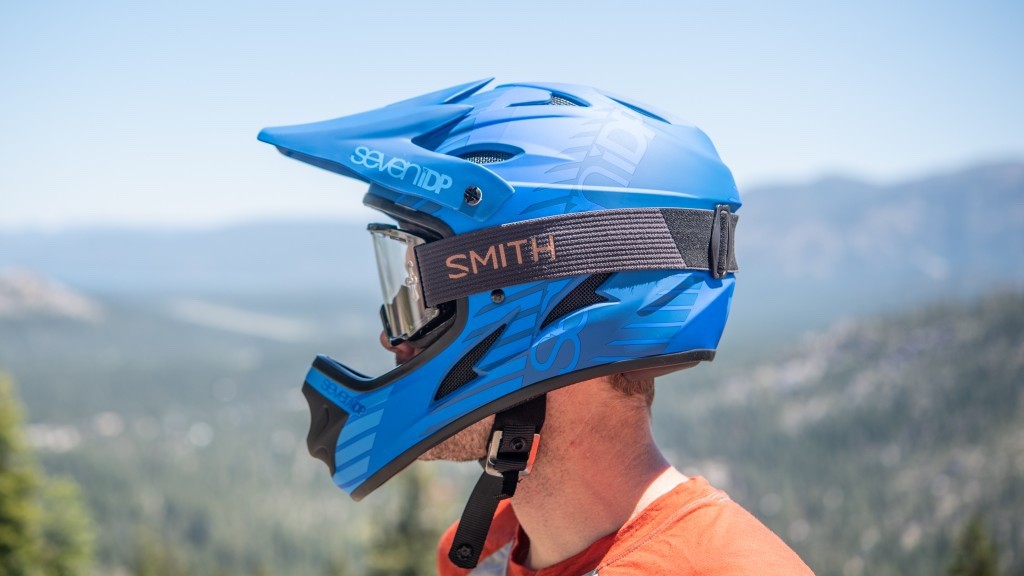Why a Good Helmet is Essential for Mountain Biking
Mountain biking is an exhilarating sport that offers a thrilling way to explore the great outdoors. However, it also comes with its fair share of risks, particularly when it comes to head injuries. According to statistics, head injuries are among the most common types of injuries sustained by mountain bikers. This is why wearing a good quality mountain bike cycle helmet is essential for any serious mountain biker.
A good helmet can make all the difference in the event of a crash or fall. It can help to absorb the impact of the crash, reducing the risk of serious head injury or even death. In fact, studies have shown that wearing a helmet can reduce the risk of head injury by up to 70%. This is why many mountain biking organizations and clubs make it mandatory for riders to wear helmets during competitions and group rides.
There are different types of helmets available for mountain biking, including full-face and open-face helmets. Full-face helmets offer maximum protection, covering the entire face and head, while open-face helmets provide more ventilation and visibility. When choosing a helmet, it’s essential to consider factors such as fit, comfort, and safety features. A good helmet should fit snugly and comfortably, with adjustable straps and a secure buckle.
In addition to protecting the head, a good helmet can also provide other benefits, such as improved visibility and reduced wind noise. Many modern helmets come with features such as MIPS (Multi-Directional Impact Protection System) and EPS (Expanded Polystyrene) foam, which can help to absorb the impact of a crash. Some helmets also come with built-in visors and goggles, which can help to protect the eyes and face from debris and wind.
Overall, a good mountain bike cycle helmet is an essential piece of gear for any serious mountain biker. It can help to protect the head and reduce the risk of serious injury, while also providing other benefits such as improved visibility and comfort. Whether you’re a seasoned pro or just starting out, investing in a good quality helmet is a must.
How to Choose the Right Mountain Bike Helmet for Your Needs
Choosing the right mountain bike helmet can be a daunting task, especially with the numerous options available in the market. However, with a few key considerations, you can find a helmet that meets your needs and provides the necessary protection for your head. When selecting a mountain bike cycle helmet, there are several factors to consider, including fit, ventilation, and safety features.
Fit is one of the most critical factors to consider when choosing a helmet. A helmet that is too small or too large can be uncomfortable and may not provide adequate protection in the event of a crash. Look for a helmet that fits snugly and comfortably, with adjustable straps and a secure buckle. Popular helmet brands such as Bell and Fox offer a range of sizes and styles to fit different head shapes and sizes.
Ventilation is another essential factor to consider when choosing a helmet. A well-ventilated helmet can help to keep you cool and dry during long rides, reducing the risk of heat exhaustion and discomfort. Look for helmets with large vents and breathable padding to ensure optimal airflow. Some helmets also feature adjustable ventilation systems, allowing you to customize the airflow to suit your needs.
Safety features are also a critical consideration when choosing a helmet. Look for helmets that meet safety standards such as CPSC (Consumer Product Safety Commission) or Snell certification. These standards ensure that the helmet has been tested and meets minimum safety requirements. Some helmets also feature additional safety features such as MIPS (Multi-Directional Impact Protection System) and EPS (Expanded Polystyrene) foam, which can help to absorb the impact of a crash.
Other factors to consider when choosing a helmet include weight, style, and compatibility with other gear such as goggles and sunglasses. Some helmets are designed specifically for certain types of mountain biking, such as downhill or cross-country. Be sure to research and read reviews to find a helmet that meets your specific needs and preferences.
Ultimately, the right mountain bike helmet for you will depend on your individual needs and preferences. By considering factors such as fit, ventilation, and safety features, you can find a helmet that provides the necessary protection and comfort for your next ride.
Top Picks: Review of the Best Mountain Bike Helmets on the Market
With so many mountain bike cycle helmets available on the market, it can be difficult to choose the right one for your needs. In this review, we’ll take a closer look at two of the top-rated helmets on the market: the Bell Zephyr and the Fox Proframe.
The Bell Zephyr is a high-end helmet that offers exceptional protection and comfort. Weighing in at just 340 grams, this helmet is designed for serious mountain bikers who demand the best. The Zephyr features a sleek and aerodynamic design, with a large visor to protect your face from the sun and branches. The helmet also features Bell’s proprietary MIPS (Multi-Directional Impact Protection System) technology, which helps to absorb the impact of a crash.
The Fox Proframe is another top-rated helmet that offers a unique combination of protection and style. This helmet features a sleek and minimalist design, with a focus on ventilation and comfort. The Proframe weighs in at just 310 grams, making it one of the lightest helmets on the market. The helmet also features Fox’s proprietary Varizorb technology, which helps to absorb the impact of a crash.
Both the Bell Zephyr and the Fox Proframe offer exceptional protection and comfort, but they differ in terms of their design and features. The Zephyr is a more traditional helmet with a larger visor and a focus on MIPS technology, while the Proframe is a more minimalist helmet with a focus on ventilation and style.
In terms of safety features, both helmets meet or exceed safety standards such as CPSC (Consumer Product Safety Commission) and Snell certification. They also feature adjustable straps and fit systems, ensuring a secure and comfortable fit.
Ultimately, the choice between the Bell Zephyr and the Fox Proframe will depend on your individual needs and preferences. If you’re looking for a more traditional helmet with a focus on MIPS technology, the Zephyr may be the better choice. If you’re looking for a more minimalist helmet with a focus on ventilation and style, the Proframe may be the better choice.
Regardless of which helmet you choose, it’s essential to remember that a good mountain bike cycle helmet is an essential part of your gear. By investing in a high-quality helmet, you can protect your head and enjoy the ride with confidence.
The Technology Behind Mountain Bike Helmets: Understanding Safety Features
Mountain bike cycle helmets are designed to protect the head in the event of a crash or fall. But have you ever wondered how they actually work? In this section, we’ll take a closer look at the technology behind mountain bike helmets, including safety features such as MIPS and EPS foam.
MIPS (Multi-Directional Impact Protection System) is a safety feature that is designed to reduce the risk of head injury in the event of a crash. MIPS works by allowing the helmet to slide relative to the head, reducing the amount of force that is transmitted to the brain. This is achieved through a series of small, flexible layers that are built into the helmet. These layers are designed to absorb the impact of a crash, reducing the risk of head injury.
EPS (Expanded Polystyrene) foam is another safety feature that is commonly used in mountain bike helmets. EPS foam is a type of plastic foam that is designed to absorb the impact of a crash. It is lightweight, breathable, and provides excellent protection against head injuries. EPS foam is often used in combination with other safety features, such as MIPS, to provide maximum protection.
In addition to MIPS and EPS foam, many mountain bike helmets also feature other safety features, such as reinforced shells and impact-absorbing liners. These features are designed to provide additional protection against head injuries, and to help reduce the risk of serious harm in the event of a crash.
So how do these safety features actually work? In the event of a crash, the helmet is designed to absorb the impact of the fall, reducing the amount of force that is transmitted to the head. The MIPS system allows the helmet to slide relative to the head, reducing the amount of force that is transmitted to the brain. The EPS foam absorbs the impact of the crash, providing additional protection against head injuries.
Overall, the technology behind mountain bike helmets is designed to provide maximum protection against head injuries. By understanding how these safety features work, you can make an informed decision when choosing a helmet, and ride with confidence knowing that you are protected.
How to Ensure a Proper Fit: Tips for Adjusting Your Mountain Bike Helmet
A proper fit is essential for a mountain bike helmet to function effectively. A helmet that is too small or too large can be uncomfortable and may not provide adequate protection in the event of a crash. In this section, we’ll provide tips on how to ensure a proper fit for your mountain bike helmet, including how to adjust the straps and fit system.
The first step in ensuring a proper fit is to try on the helmet before you buy it. Make sure the helmet sits level on your head, with the front of the helmet just above your eyebrows. The straps should be adjusted so that they are snug but not too tight. You should be able to fit two fingers between the strap and your chin.
Once you have purchased your helmet, you’ll need to adjust the fit system to ensure a proper fit. Most mountain bike helmets have an adjustable fit system that allows you to customize the fit to your head. This may include adjustable straps, a dial-fit system, or a combination of both.
To adjust the fit system, start by putting on the helmet and adjusting the straps so that they are snug but not too tight. Then, adjust the dial-fit system or other adjustable components to ensure a secure and comfortable fit. Make sure the helmet is level on your head and that the straps are not too loose or too tight.
It’s also important to ensure that the helmet is properly positioned on your head. The helmet should sit level on your head, with the front of the helmet just above your eyebrows. The straps should be adjusted so that they are snug but not too tight. You should be able to fit two fingers between the strap and your chin.
By following these tips, you can ensure a proper fit for your mountain bike helmet and enjoy a safe and comfortable ride. Remember, a proper fit is essential for a helmet to function effectively, so take the time to adjust the fit system and ensure a secure and comfortable fit.
Mountain Bike Helmet Maintenance: How to Keep Your Helmet in Good Condition
Mountain bike cycle helmets are an essential part of your gear, and proper maintenance is crucial to ensure they continue to provide optimal protection and comfort. In this section, we’ll discuss the importance of maintaining your mountain bike helmet, including how to clean and store it, and provide tips on how to inspect your helmet for damage and when to replace it.
Cleaning your mountain bike helmet is a simple process that can help extend its lifespan. Use a soft-bristled brush to remove any dirt or debris from the helmet’s exterior, and then wipe it down with a damp cloth. Avoid using harsh chemicals or abrasive cleaners, as they can damage the helmet’s finish or compromise its safety features.
When storing your mountain bike helmet, make sure it is kept in a cool, dry place away from direct sunlight. Avoid storing your helmet in a hot car or in a humid environment, as this can cause the materials to degrade over time. It’s also a good idea to store your helmet in a protective case or bag to prevent scratches or damage.
Inspecting your mountain bike helmet for damage is an important part of maintaining it. Check the helmet’s exterior for any signs of damage, such as cracks or dents, and inspect the straps and fit system for any signs of wear or damage. If you notice any damage, it’s best to replace the helmet immediately.
So, how often should you replace your mountain bike helmet? The answer depends on a variety of factors, including how often you ride and the conditions you ride in. As a general rule, it’s recommended to replace your helmet every 3-5 years, or sooner if you notice any signs of damage or wear.
By following these tips, you can help extend the lifespan of your mountain bike helmet and ensure it continues to provide optimal protection and comfort. Remember, a well-maintained helmet is an essential part of your gear, and proper maintenance can help you stay safe and comfortable on the trails.
Common Mistakes to Avoid When Buying a Mountain Bike Helmet
When buying a mountain bike helmet, there are several common mistakes to avoid. In this section, we’ll discuss some of the most common mistakes and provide tips on how to avoid them.
One of the most common mistakes is buying a helmet that is too small or too large. A helmet that is too small can be uncomfortable and may not provide adequate protection, while a helmet that is too large can be cumbersome and may not stay in place. To avoid this mistake, make sure to try on several different helmets and choose one that fits comfortably and securely.
Another common mistake is not considering the type of riding you will be doing. Different types of mountain biking require different types of helmets. For example, downhill mountain biking requires a full-face helmet, while cross-country mountain biking may require a lighter, more ventilated helmet. Make sure to consider the type of riding you will be doing and choose a helmet that is designed for that type of riding.
Not checking the safety certifications is another common mistake. Look for helmets that meet safety certifications such as CPSC (Consumer Product Safety Commission) or Snell certification. These certifications ensure that the helmet meets certain safety standards and can provide protection in the event of a crash.
Not considering the features and benefits of the helmet is another common mistake. Different helmets have different features and benefits, such as ventilation, weight, and safety features. Make sure to consider what features and benefits are important to you and choose a helmet that meets your needs.
Finally, not reading reviews and doing research is another common mistake. Reading reviews and doing research can help you make an informed decision and choose a helmet that is right for you. Look for reviews from other riders and consider their experiences and opinions.
By avoiding these common mistakes, you can find a mountain bike helmet that meets your needs and provides the protection and comfort you need to enjoy your ride.
Conclusion: Why a Good Mountain Bike Helmet is an Essential Part of Your Gear
In conclusion, a good mountain bike helmet is an essential part of your gear, providing safety, comfort, and style. Whether you’re a seasoned pro or just starting out, a high-quality helmet can make all the difference in your riding experience. By understanding the importance of wearing a helmet, choosing the right helmet for your needs, and maintaining it properly, you can ensure a safe and enjoyable ride.
Remember, a mountain bike helmet is not just a piece of safety gear, it’s also a fashion statement. With so many styles and designs available, you can choose a helmet that reflects your personality and riding style. From sleek and aerodynamic to bold and colorful, there’s a helmet out there for everyone.
So why wait? Invest in a high-quality mountain bike helmet today and experience the difference for yourself. With its safety features, comfort, and style, a good helmet is an essential part of your gear that you won’t want to ride without.
By following the tips and advice outlined in this article, you can find the perfect helmet for your needs and enjoy a safe and enjoyable ride. Whether you’re hitting the trails or cruising around town, a good mountain bike helmet is an essential part of your gear that will keep you protected and looking great.
So go ahead, get out there and ride with confidence. With a good mountain bike helmet, you’ll be protected and ready for whatever the trail throws your way.









